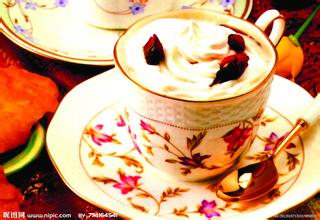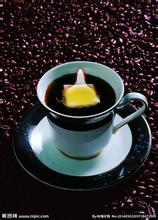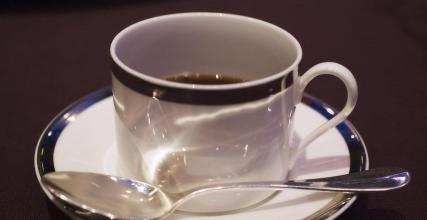Aromatic and mild Salvadoran coffee Flavor Taste Manor Features Fine coffee beans Introduction
Salvadoran flag adopted in 1822, withdrawn in 1865, restored in 1912, 1972
The Constitution of 1949 officially established the flag. The flag is rectangular in shape and has an aspect ratio of 335:189. The flag is composed of three parallel rectangles of blue, white and blue from top to bottom, and the white part is painted with the national emblem pattern in the center. El Salvador was a member of the former Central American Federation, and its flag colors are the same as those of the former Central American Federation. Blue symbolizes blue sky and sea, white symbolizes peace. [3]
national emblem
The national emblem is an equilateral triangle with three yellow lines representing equality, truth and justice. Five volcanoes rise from the sea between the Pacific Ocean and the Atlantic Ocean, symbolizing the five Central American countries. The "rod of freedom" and the red "hat of freedom" stand high on the top of the mountain, radiating the light of freedom and liberation. "September 15, 1821" is the day of El Salvador's independence, and rainbows overflow joy and hope in the sky. Five flags of the Central American Federation surround the coat of arms, expressing El Salvador's desire to reorganize the federation. At the bottom is a yellow ribbon that reads "God, Unity, Liberty" in Spanish, green laurel branches surround the triangle to make the emblem circular, and the outermost ring reads "Central American Republic of El Salvador" in Spanish. [3]
Proudly saluting our country.
The lyrics were written by Juan José Cañ in 1856 and composed by Juan Aberle in 1879.
Lyrics (chorus and first verse only):
Let us salute our motherland proudly
We were called her children.
Let us swear that our lives will be alive
El Salvador
There is nothing more beautiful than this, consecrated!
El Salvador
El Salvador
(first paragraph)
Enjoy peace in paradise
El Salvador has never lacked noble dreams.
To fulfill her eternal claim
Insist that her greatness shines magnificently!
March with the invincible savior
She struggled to follow the Lord
To fulfill her great destiny
To conquer a happy future
A huge barrier protects her from the oncoming evil of betrayal
Since the day her flag flew.
Written in her blood, liberal-flavored mild Salvadoran coffee.
El Salvador is one of the small countries in Central America and has a very dense population. Its coffee flavor is characterized by excellent balance.
Today, this coffee accounts for 40% of the country's exports. The best quality coffee in January to March after 35% of the extra-hard beans exported to Germany.
In the early 1990s, guerrilla warfare greatly damaged the country's national economy, reducing coffee production from 3.5 million bags in the early 1970s to 2.5 million bags in 1990 - 1991. The eastern part of the country was most affected by guerrilla warfare, and many farmers and workers were forced to leave their estates. The shortage of funds has caused coffee production to plummet, from 1200 kilograms per hectare in the past to less than 900 kilograms per hectare today. In addition, in 1986 the Government imposed an additional 15 per cent duty on coffee exports, i.e. 15 per cent on top of the existing 30 per cent tax. Taxes, combined with unfavourable exchange rates, severely reduced coffee exports and, with them, quality.
The government finally realized the huge role of coffee in the national economy, such as employment, foreign exchange and agricultural development, so in 1990, it privatized part of the coffee export industry, hoping to increase the yield of coffee in the export market.
In Cuscacbapa, El Salvador, coffee beans are packed and ready for export. El Salvador is tied with Mexico and Guatemala as the producer of Asa and Meldo, and is competing with other countries for the top one or two places in Central America. Highland origin, for the size of large coffee beans, fragrant taste mild. As in Guatemala and Costa Rica, coffee in El Salvador is graded according to altitude, with the higher the altitude, the better the coffee. There are three grades according to altitude: SHB= high, HEC= medium high, CS= low.
El Salvador's unique superior variety, Pacamara, is a hybrid of Pacas-an abrupt variant of the Bourbon species found in El Salvador, with the giant bean Maragogype-an abrupt variant of the Tibica species found in Brazil.
The interesting thing about Christmas Farm coffee is that it is refined in secret, using mineral rich hot spring water to process green coffee beans. This farm is located in fertile volcanic soil and has abundant natural hot spring water, so all of this natural hot spring water is used when processing raw beans; there are many farms in the world that grow coffee, but this method is still rare.
Salvadoran coffee beans| w.kaf.name El Salvador coffee refers to coffee beans produced in the small country of El Salvador in South America.
Additional information about this spa: The water from the source is 85 degrees Celsius. Use 2-inch pipes to channel the water to six different thermal pools at different elevations. The temperature of the sixth thermal pool is 32 to 34 degrees Celsius. Then use this cooled thermal water to process coffee beans. This hot spring water flows continuously all year round. Locals drink this hot spring water. It has a pH of 8.02 and contains ingredients that can sweeten coffee.

Important Notice :
前街咖啡 FrontStreet Coffee has moved to new addredd:
FrontStreet Coffee Address: 315,Donghua East Road,GuangZhou
Tel:020 38364473
- Prev

Noble, tender, elegant Cuban crystal coffee boutique coffee beans flavor characteristics Introduction
Cigars, coffee and sugar cane are the three major industries of the Republic of Cuba and enjoy a high reputation in the world. Cuban cigars have a very high reputation in the world and are known as the world's first cigars; Cuban coffee also has a high reputation in the coffee industry. Cuban Crystal Mountain coffee ranks among the top in the world. Crystal Mountain is adjacent to the Blue Mountains of Jamaica and has similar climatic conditions.
- Next

Nicaraguan Coffee with rich mellow flavor and taste introduction to boutique coffee in manor area
Nicaragua is now one of the poorest countries in Central America. Due to its poor economic foundation, the coffee industry is still relatively backward, while coffee farmers are in extreme poverty. Fortunately, Nicaraguan coffee has received some foreign aid funds to improve the quality of its coffee. Coffee from Madagelba, Sinodega and Segovia in Nicaragua
Related
- Detailed explanation of Jadeite planting Land in Panamanian Jadeite Manor introduction to the grading system of Jadeite competitive bidding, Red bid, Green bid and Rose Summer
- Story of Coffee planting in Brenka region of Costa Rica Stonehenge Manor anaerobic heavy honey treatment of flavor mouth
- What's on the barrel of Blue Mountain Coffee beans?
- Can American coffee also pull flowers? How to use hot American style to pull out a good-looking pattern?
- Can you make a cold extract with coffee beans? What is the right proportion for cold-extracted coffee formula?
- Indonesian PWN Gold Mandrine Coffee Origin Features Flavor How to Chong? Mandolin coffee is American.
- A brief introduction to the flavor characteristics of Brazilian yellow bourbon coffee beans
- What is the effect of different water quality on the flavor of cold-extracted coffee? What kind of water is best for brewing coffee?
- Why do you think of Rose Summer whenever you mention Panamanian coffee?
- Introduction to the characteristics of authentic blue mountain coffee bean producing areas? What is the CIB Coffee Authority in Jamaica?

